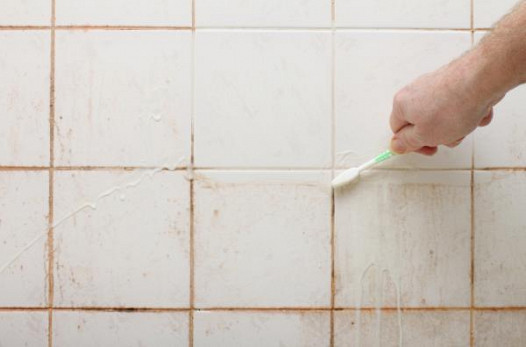Looking for Indicators of Water Damage in the Bathroom
Looking for Indicators of Water Damage in the Bathroom
Blog Article
We've come across this article pertaining to Looking for Signs of Water Damage in the Bathroom down the page on the internet and reckoned it made sense to discuss it with you on this page.

The restroom is very at risk for moist accumulation and also potential water damage because of the regular use water in it. This write-up supplies simple inspection techniques to help spotting water damage dangers.
The regular use water in the washroom makes it exceptionally at risk for wet buildup and also possible water damages. By evaluating it consistently, you can lower water relevant damages.
The following set of inspections is easy to execute as well as must be done when in every three months in order to keep your bathroom in good shape and to stop possible water problems brought on by the tub, the shower, pipeline joints as well as plumbing, sinks, cupboards, and the toilet
Do not neglect executing these examinations as well as be extensive while performing them. Keep in mind that these simple examinations can conserve you a great deal of money by providing very early signs for water damages
Tub and Shower
The shower and also bath tub need special focus as well as maintenance. Check the floor tiles as well as replace if cracked. See to it that there is no missing out on grout between the tiles. Evaluate as well as replace cracked caulking at joints where the wall surfaces satisfy the floor or the bath tub. Blocked drains and also pipelines problems will certainly stop the tub from drying and also may indicate severe issues beneath the bath tub. Speak with a specialist right away to prevent architectural damage. Pay attention to stainings or soft areas around the bath tub walls as they may suggest an internal leakage.
Plumbing
Signs for water damage are tough to discover since a lot of pipes are set up inside the walls.
Pay unique attention to floor covering and wall surfaces moisture and also stains as they might indicate an unseen plumbing issue. Examine wetness degrees in adjoining areas as well.
Sinks and also Cabinets
Sinks and closets are exposed to wetness and moisture day-to-day as well as are usually neglected. Check frequently under the sink and also on the countertop above it. Repair any kind of drip in the catch as it may suggest drainpipe troubles. Look around the sink, sluggish draining pipelines might indicate a blocked drainpipe. Change sink seals if they are fractured or loose.
The Bathroom
The bathroom is an at risk water joint. Check the water lines as well as look for leakages around the commode seat, in the hose, and under the water storage tank. If you find any kind of indicators of moisture on the floor around the toilet, check for leakages in the toilet edge and also container seals.
Be aware that hanging toilet bowl deodorants boosts the possibilities for obstructions.
TIPS TO PREVENT WATER DAMAGE IN THE BATHROOM
The average household uses approximately 80-100 gallons of water per person per day. For a family of 4, that's almost 2,500 gallons of water a week! The largest portion of this consumption comes from bathroom use. Flushing the toilet uses the most water, followed by taking a shower or bath. With that much water running through the home, water damage in the bathroom is bound to happen. Knowing how to spot signs of a water leak is essential to preventing long-term damage. This guide provides you with tips to reduce the impact of water damage on your bathroom.
CAUSES OF BATHROOM WATER DAMAGE
Pipe breaks are the most common cause of water damage we see in our daily jobs. The age of a pipe plays a large role in a pipe break as well as corrosion. Over time, the metal begins to break down, allowing water to escape. Frozen pipe breaks are also a concern in the winter months. Toilet overflows caused by paper products or children flushing inappropriate items. Degraded caulking around the toilet or bathtub can allow water seepage, sometimes behind the fixture, into the subfloor or walls. Condensation forms when the water in a pipe is cooler than the air temperature. Beads of water form on the exterior of the pipes, sometimes so much so that the water begins to drip and pool below. Sink or shower backups created by poor drainage. HOW TO PREVENT WATER DAMAGE IN YOUR BATHROOM
Inspect your toilet supply line for worn or frayed hoses and replace them as needed. Winterize your plumbing to prevent a frozen pipe break. Use vent fans to prevent condensation that can lead to mold growth. Routinely check and replace degraded caulking around your toilet or bathtub. Increase the temperature in your toilet tank and insulate your pipes during the warm summer months to keep condensation from forming. Use child safety locks on the toilets. Flush only toilet paper. "Flushable" wet wipes are actually not good for your plumbing system. Additionally, feminine hygiene products should not be flushed. Prevent water from escaping the tub or shower. Make sure shower curtains are in good condition. Inspect shower doors and replace the seal strip if necessary. Wipe up any water that accumulates on the floor and use bath mats. Water left to sit can cause damage to the tiles and flooring. Refrain from using bath products containing heavy oils to avoid a clogged drain.

As a serious reader about How to Prevent Bathroom Water Damage, I thought sharing that chunk was worth the trouble. Those who enjoyed our blog posting plz be sure to share it. We take joy in reading our article about How to Prevent Bathroom Water Damage.
Visit Url Report this page